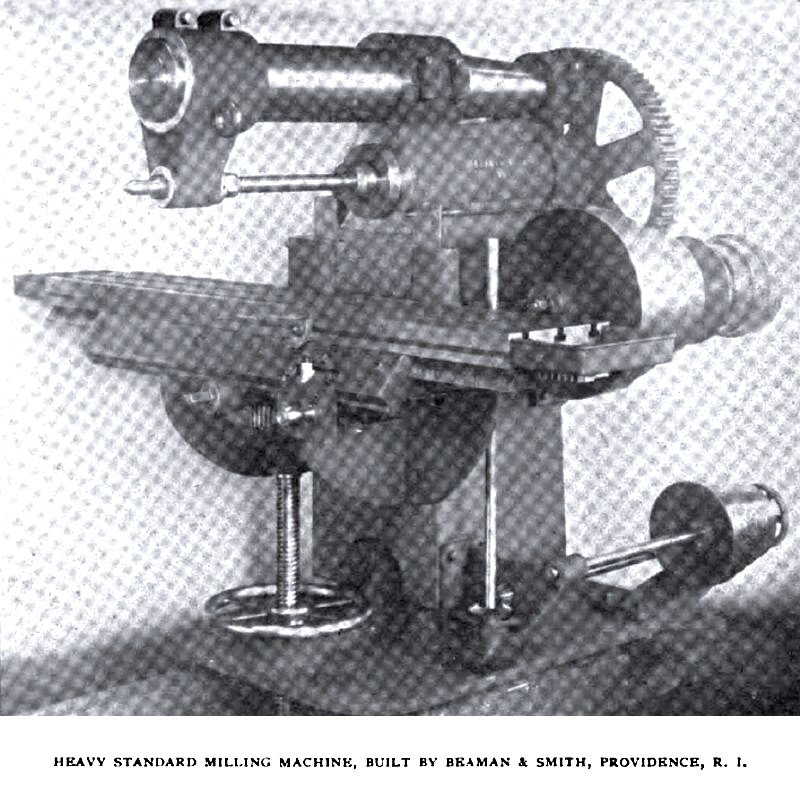|
Title: |
1892 Article-Beaman & Smith, Heavy Horizontal Milling Machine |
|
Source: |
The Age of Steel, V71, 02 Jan., 1892, pg. 13 |
|
Insert Date: |
2/25/2025 3:13:00 AM |
Heavy Standard Milling Machine.
From its introduction to the present time the milling machine has gradually grown in favor as well as in size, and the uses to which it could be advantageously put have multiplied as its possibilities have been learned. It differs from the lathe, the planer and the drill as a standard tool, in that it is made in many forms, the better to adapt it to the character of work for which it is intended. The accompanying illustration is of a milling machine of the so-called "Standard" form, but differing from the usual construction in several particulars. It is very heavy, weighing about 10,000 pounds. The spindle runs in hard bronze holes, the front bearing being conical and 6½" diameter.
It is driven by a four-section cone for 3½" belt The machine is automatic in its movements
through gearing in the ratio of 16 to 1. The gear throughout, being so built that it is adjustable for
on the spindle is 30" diameter, 3½" face. There are eight properly arranged speeds from that required for a cutter 4" diameter to one 20" diameter. The overhanging arm is 8" diameter and can be removed for the use of face cutters or other purposes. The head has a horizontal movement on top of the column for adjustment of cutters thus dispensing with one joint bellow the table The knee bearing on Standard is 20" wide, 26" long and the table is 72" long 14" wide. The feed is driven by a 2½" belt on a four-section cone and in connection with change gearing, two changes of feed can be obtained. This is a very important feature, as it is frequently desired that the rate of feed per minute of the table should be greater when using a cutter of large diameter and consequently slow spindle speed, than when using a cutter of small diameter and fast spindle speed. As a whole the machine is very substantial and powerful, and well-proportioned to produce the maximum amount of work known to modern practice. Full information may be obtained from the makers, Beaman & Smith, Providence, R. I. |
|
 1892 Beaman & Smith, Heavy Horizontal Milling Machine
1892 Beaman & Smith, Heavy Horizontal Milling Machine
|
|